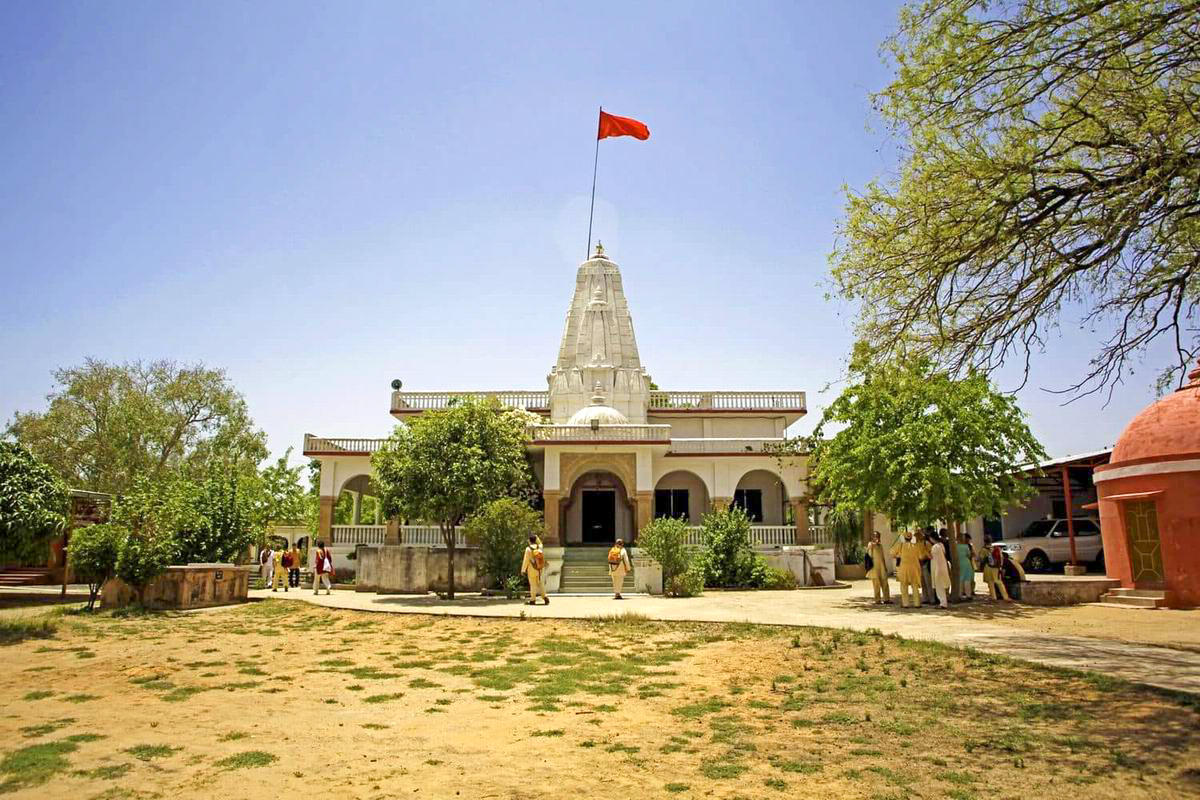Ashram
According to the Vedic tradition and the teachings of the Vedas, one definition of the word ‘ashram’ (a – welcome, shram – to work) is a place where you are welcome to do something for others and for yourself. In this way ashram is a place where you work on yourself in a spiritual sense.
It is a place of spiritual activity through daily practice of yoga, equally in all its forms: the practice of karma yoga, bhakti yoga, gyan yoga and raja yoga. Ashram is a place where you will find refuge without any discrimination and where you are always welcome. Anashram is a refuge. The purpose of life in the ashram is the same as the meaning of yoga– enlightenment and moksha.
The ashram is usually populated with sannyasis and aspirants who have the desire and ability to fully devote a period of their life to spirituality. One of the major purposes of an ashram is to offer a place of spiritual gathering for people who lead a worldly life. We can safely say that ashrams are lighthouses and harbors on the stormy sea of samsara.
In the ashram, during satsangs, spiritual strength is renewed so that one can stay focused on Sat Sanatan Dharma and God during their everyday life, and more easily recognise and avoid the pitfalls of maya – worldliness.

Besides the regular satsangs and organised yogic activities for the community, ashrams often have Gurukuls (schools where students live and where, besides learning worldly knowledge, they also practice spiritual skills) and Gosalas (a place for old and sick animals to be taken care of).
Ashrams have always been, and continue to be, the main gathering point for communities living in surrounding areas. A place of safety, a place where students and locals came to their teacher – Guru,for a darshan and advice; places where they could get any kind of help and spiritual guidance for their life.
The Four Stages of Life
The term ashram also means the four periods of life in accordance with the Sanatan Dharma:
- Brahmacharya Ashram (Birth – 25 years of age) is the time of discipleship and celibacy, when we dedicate ourselves to learning, spiritual disciplines and secular knowledge.
- Grahasta Ashram (25 – 50 years of age) is the time for creating family and for domestic life. It is a time when spiritual activities are conducted together with the worldly life and through helping others.
- Vanaprastha Ashram (50 – 75 years of age) is the time when we devote ourselves more to spirituality, and serve the community and environment as a role model, advisor and transmitter of tradition and culture to younger generations.
- Sannyasa Ashram (75 onwards) is the time for a full withdrawal from the world, when all worldly duties and positions cease to exist. (Sannyasa can be chosen as a way of life at any time.)
Code of Conduct in the Ashram
The Ashram is a place of spirituality, peace and inner joy. It is also a place of spiritual work – internal and external alike. Therefore, one should cultivate and maintain the atmosphere of holiness, harmony, understanding, unity, selflessness and service. An ashram is not a suitable place for conversations or activities contrary to the spiritual principles and ahimsa (comprehensive nonviolence).
The ashram of every spiritual school has its own special code of conduct, but here are some general rules that are respected in all places: In an ashram it is not advisable to talk about mundane subjects, politics, and the like. It is advised to avoid irresponsible behavior, criticism, gossiping, arrival in unsuitable clothing or arrival at inappropriate times (during meditation, prayer, other programs and night rest). The clothes in which you come to the ashram should encourage a spiritual atmosphere and be clean. Some schools have their own “uniforms” that need to be understood in the same way kimonos are used in martial arts – it is the clothing through which you show respect to the ashram, to your school, your teacher, and, at the end, to yourself and everyone around you.
Satsang
Satsang literally means “encounter with the truth”. In Sanskrit sat means the truth, and sanga means company. Satsang represents the meeting with the highest truth and with an enlightened Guru. Satsang is one of the nine parts of bhakti yoga according to the Narada Bhakti Sutras.
Satsang also means good company in which we nurture our spirituality and bhakti, and where we are led by the Uttana – the principle of going higher in the spiritual evolution. As opposed to kusang (bad company, where we are led by Patana – that which leads us to the decline in spiritual evolution). It is said that satsang is so important that a mere word at a satsang can save one’s life. There are countless stories and bhajans, which confirm this fact.

